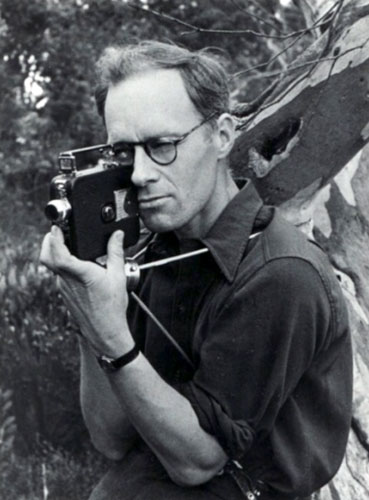|
1906 – 1986
Axel Poignant was a Australian photographer who produced significant bodies of work. Poignant was born in England to an English mother and Swedish father. He showed an interest in photography from his early teens but it was not until he had emigrated to Australia in 1926 that his interest developed into a professional career.
Poignant lived first in Sydney then moved to Perth where he established himself as a portrait and wedding photographer, later as an aerial photographer for Western Mining.
In 1939 he met the naturalist Vincent Serventy (Australian author, ornithologist and conservationist) and in 1940 he met the artist/photographer (later gallery director) Hal Missingham. Poignant shared an exhibition with Missingham in 1941. |
|
 |
The following year Poignant began his extensive photographic documentation of the outback and Aboriginal people, travelling the Canning Stock Route. The most extensive photographic record Poignant made was in 1952 when he shared a camp for several months with senior Aboriginal men at the Liverpool River. Poignant's third marriage led him back to England in 1956. England was to remain his base until his death but he returned to Australia frequently in his later years.
In 1982 the Art Gallery of New South Wales mounted a major retrospective of his photographs.
(the above introduction is based on text on the website of the Australian National Portrait Gallery)
More detailed biographies below in the links
Links for further information
An online version of the catalogue for the Retrospective Exhibition of the work of Axel Poignant
The Art Gallery of New South Wales, Sydney 1982 , curated by Gael Newton
Picture Story: Axel Piognant, Photographer, The Formative Years 1929–1942 by Roslyn Poignant (2011) (PDF)
Collection search: Art Gallery of NSW - click here
Collection search: National Gallery of Australia: click here
or if that does not work - click here for search page and type in Axel Poignant
Short Biography - from Silver & Grey, Gael Newton 1980
On Our Collections: A 2025 essay about Axel Poignant's 1953 photograph Mt. Warning
The Swagman, 1954 - an Australian Icon, Gael Newton AM 2025
Australian Dictionary of Biography 2012 entry
Wikipedia entry on Axel Poignant
|
